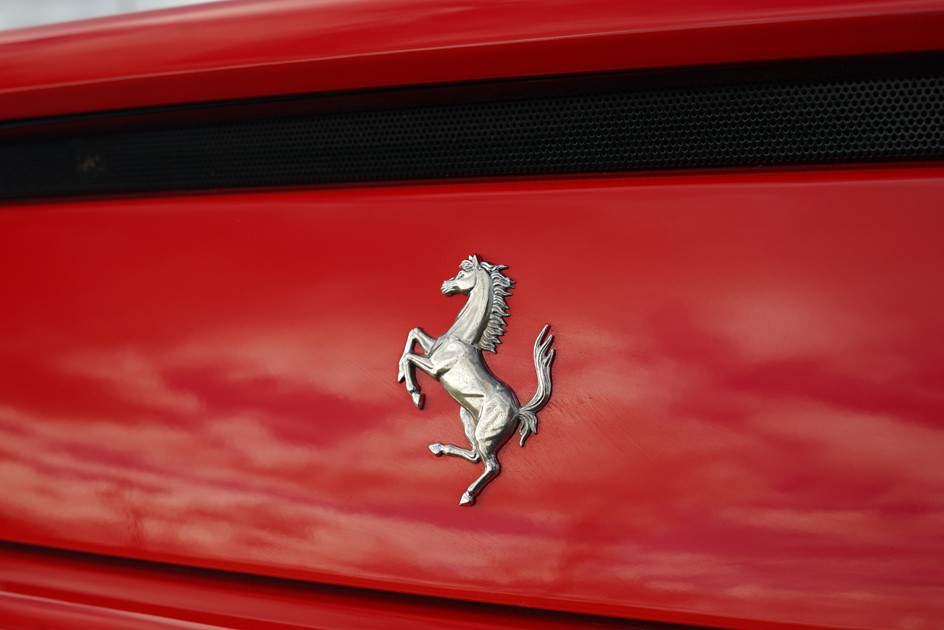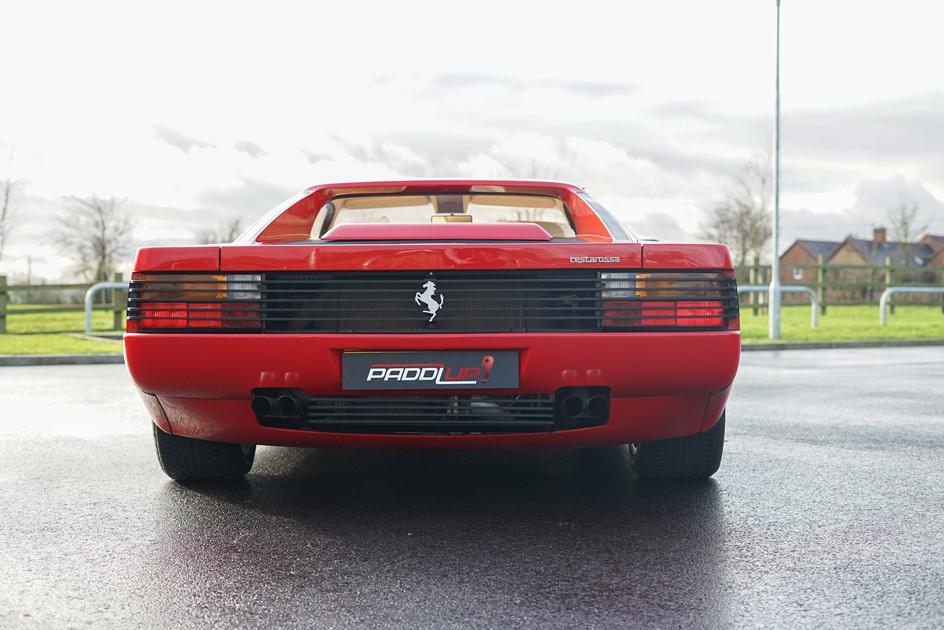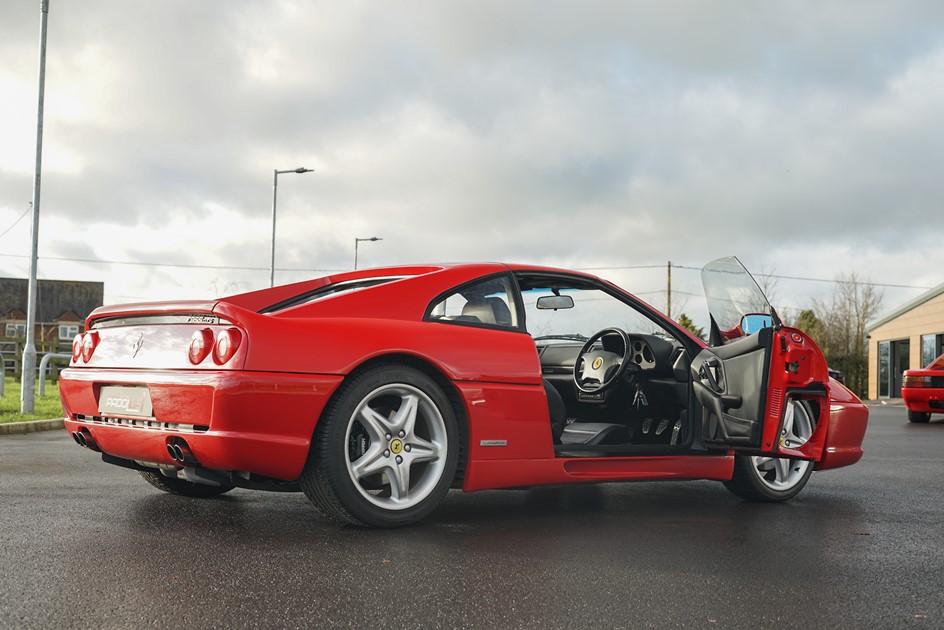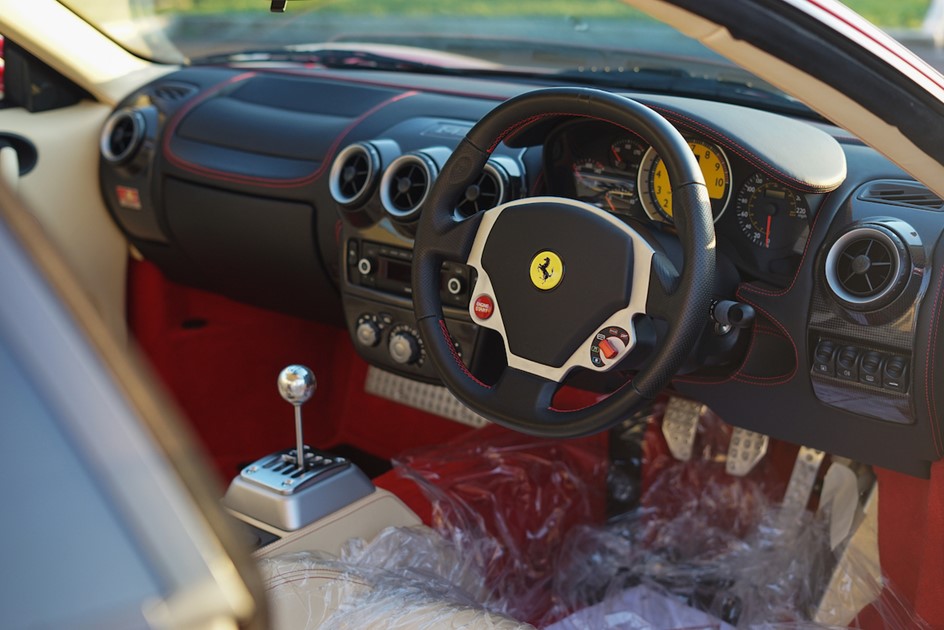Molto bene: F1 technology in Ferrari road cars

For those manufacturers fortunate enough to have both a thriving road car offering and a competitive motorsport outfit, the two arms have always been intrinsically linked. Perhaps the most prominent marque to capitalise on this is that of the prancing horse – Ferrari.
Born from an ambition to succeed on the track, Ferrari began its racing exploits in the late twenties and subsequently flourished in the sports car and supercar markets from 1947. From that point on, its road cars benefited from cutting-edge technology having been stewed in the developmental soup of the motorsport paddock. This model served as a blueprint for other brands like McLaren to follow years later.
It wasn’t until the eighties, though, that the advantages of this multi-faceted approach truly became apparent. Formula 1 was pushing the boundaries of technology in ways that mere mortals never thought possible, and it wasn’t long before these revolutionary advancements made their way into premium road cars. You no longer had to sport a majestic moustache and answer to Nigel to drive cars at the absolute forefront of automotive engineering.
Ferrari Testarossa (rear-mounted radiators)
Adopting the iconic Testarossa appellation of the World Sportscar Championship-winning 250 Testa Rossa racing car from 1957, the eighties iteration decisively claimed the name and ran with it, quickly becoming one of the era’s most celebrated poster cars.
Having carved out a sizeable chunk of public admiration in a decade brimming with automotive pop culture icons, the Testarossa also gave automotive aficionados plenty to smile about as well, featuring a rear-mounted, naturally-aspirated flat-12.
The most significant change over that of its predecessor – the 512 BBi – was its rear-mounted radiators. Following a trend that F1 cars had already championed for many years with their sidepod-housed radiators, the Testarossa masterfully added extra weight and therefore traction to its rear wheels.
At the time, this bucked a road car industry trend. The engine of a supercar, buy and large, was found at the rear to produce the aforementioned performance benefits. The radiator on the other hand, had remained at the front for ideal cooling.
At Enzo Ferrari’s personal request, the designers at both Ferrari and Pininfarina leaned into a motorsport-inspired design concept. Thus the idea of moving the radiators rearward was born. It ended up being a win-win for the masterminds from Maranello, improving traction at the rear and freeing up the front of the car for aerodynamic design and optimising the driver’s view of the road.
That wasn’t all though, the Testarossa’s infamous side strakes are now regarded as an iconic piece of automotive styling, but they weren’t just for show. As a result of extensive time in the wind tunnel, the strakes doubled up as channels to direct airflow to cover the full surface of each of the newly positioned radiators. Inadvertently, they had created a new look for the Italian marque that transcends the decades.
There had been rear-engined, water-cooled cars with radiators housed at the rear in the past; the likes of Renault and Fiat had proved it could be done. None, however, had exposed the radiator to oncoming air in the same fashion as a racing car, nor had they contended with the extreme heat of a twelve-cylinder, 365bhp 4.9-litre engine. The Testarossa was the first of its kind and it marked the beginning of a new era for the brand.
For more details, view the full vehicle listing for our 1988 Ferrari Testarossa.

F355 GTS (ground effect)
The F355 bore a striking resemblance to its predecessor, the 348, when it was unveiled in 1994 and that’s because it was, in essence, a heavily revised version. Despite its starting point in life, the F355 made its own significant mark in Ferrari history with the introduction of ground effect to a road car for the very first time.
Owing to the 348’s reputation for rudimentary mechanics, a focus on improved performance was placed on the F355. Its 3.5-litre V8 engine delivered 380hp and revved to 8000rpm so it certainly didn’t disappoint in that department.
Where the 355 really shone, however, was its innovative underbody design. Having been outlawed by the FIA in 1982, the Colin Chapman-pioneered concept of ground effect was deemed too dangerous for the Formula 1 cars of that era. It wasn’t until the nineties that the idea was revived for road cars.
It goes without saying that it wouldn’t just be a copy-and-paste job from F1 cars to the road, but the premise was the same. Properly controlled airflow beneath the car being released through a venturi tunnel at the rear will aid in releasing air pressure on its underbelly. The resulting pressure differential sucks the car onto the road’s surface and significantly improves grip.
One of the principal obstacles to overcome was a road car’s requirement for adequate ground clearance, unlike that of its track-going siblings. Once again, Ferrari revved up its wind tunnel and set to work developing a clearly defined floor shape and twin rear venturis for the F355.
Although an encased underbody – like that of the Mercedes-Benz 300SL – had been seen before, generating significant downforce through such a method had not been achieved before. As you’d expect with pioneering technology, there were some teething issues; an opening below the power unit was required to prevent catastrophic overheating.
Ground effect was a pivotal advancement in contemporary Ferrari performance that has since been applied to many of its road-going cars such as the F50, the 360 Modena and the F430 generating 310 kg, 180kg and 280kg of downforce respectively at a speed of approximately 185mph.
Check out the full spec list for our 1997 Ferrari F355 GTS.

F430 (E-Diff and aluminium frame)
The F430 had a lot to live up to when it was launched in September 2004, superseding the 360 Modena which, with its 17,000 unit sales was Ferrari’s best-selling model to date. Although it had a tough act to follow, this new model was ready for the challenge; it was equipped with not one but several F1-developed technologies.
With direct access to both Rubens Barrichello and Michael Schumacher during the peak of their early-2000s powers, the F430’s designers would’ve been hard-pushed to deliver anything other than a work of automotive art and fortunately, they did just that.
Perhaps most notably, The F430 housed an electronic differential or E-Diff, analogous to that of the F1 car’s concept. Accompanying the diff was a steering wheel-mounted manettino, a rotary dial facilitating adjustments to the set-up for various conditions (ice, low grip, sport, race and stability/traction control off). The supercar’s designer Frank Stephenson was inspired by the marque’s championship-winning single seaters and so, for the first time in a road car, employed the use of such a switch as well as an engine start button that have since become mainstays in the Ferrari offering.
Wind tunnel-honed aerodynamics were further enhanced, once again improving upon the efficiency of the floor and rear diffuser concept established in the 355. The overall styling was familiar to those well acquainted with the Ferrari range; Pininfarina preserved much of the 360’s front end while the rear was reminiscent of that of the Enzo.
A jump in displacement over its predecessor (4307cc instead of 3600cc) yielded 90 more horsepower, a four-second 0-62mph run and a maximum of 465 Nm at 5,250 rpm, meaning access to ferocious power delivery right the way through the rev range.
Since 1991 and Piero Ferrari’s pledge to focus on fundamentally lighter cars, the manufacturer delivered on that promise and then some. Although the 360 Modena was around 10 per cent larger than the F355, it actually shaved off 100kg and that was largely down to aluminium permeating the entire design.
The benefits of aluminium had been well documented by the Scuderia, matching the strength of steel at just two-fifths of the weight. It had featured in the engines and transmissions of many previous models and then it began infiltrating the panels, the last stage of full aluminium adoption was the space frame.
A need to meet current and future European safety standards without adding additional weight resulted in a partnership with Alcoa. Together with Alcoa, a new Light Alloy Technologies department was established and a revolutionary new frame produced, adding strength and stiffness. The F430 saw the refinement of this concept and although a 10 per cent weight increase over the 360 had to be conceded, torsional stiffness rope 20 per cent and bending stiffness eight per cent.
View the full description and gallery for the 2007 Ferrari F430 Manual here.


